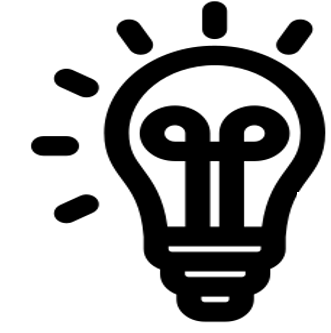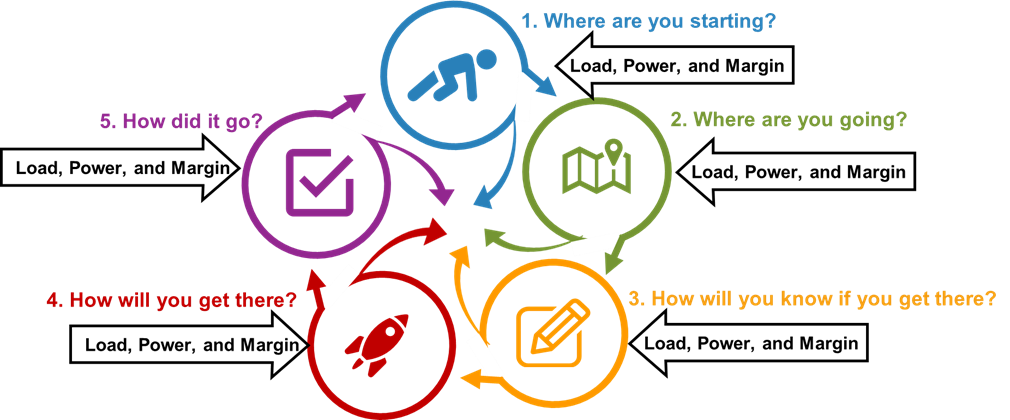
Unit A – Teaching & Learning Theories
A11. Load, Power, and Margin
Load, Power, and Margin
When considering the motivation and cognitive load of your students, you may want to also consider McClusky’s Theory of Margin. This theory discusses the person’s available capacity for managing responsibilities (and learning). McClusky defined three factors that define a person’s ability to manage:
- The Power factor consists of external and internal resources available to the individual. External resources include physical health, possessions (including economic possessions), friends/social life, etc. Internal power includes skills, knowledge, abilities, life experiences, coping and thinking skills, resiliency, etc.
- Load includes the demands on a person. External load factors include family, career, etc. Internal load includes self-concept, self-confidence in ability to learn, ideals, values, cultural standards, etc.
- Margin is basically the relationship between load and power.
“In simple terms, the more margin an adult has, the more equipped he or she will be to deal with the source(s) of the load. The less margin an adult has, the chance of dealing productively with the source(s) of load decreases” (Caruso, 2022). Typically, we have the ability to manage with the margin we have.
If a person’s load is too heavy (not enough power to create a good margin), the person will struggle. this may impact their ability to learn as they deal with other issues (Figure 1). However, if a person’s load is less heavy (enough power to at least balance the load), the person will have more ability to learn (Figure 2). This is not the only factor in their ability to learn, but helps explain the impact of outside pressures.
Figure: Heavy Load vs High Power


Most of us have had times when we felt overwhelmed. These may indicate a shift in load or power, however temporary. Some of us have a large margin allowing us to deal with these changes. However, the margin can shift when either the power or load is changed. The margin can be decreased or increased in a student’s home or work life through external and internal changes. And external and internal changes can be symbiotic.
However, the margin can decrease due to university life as well. If a student has a relatively low margin and faces some additional load, such as a quiz, environmental distractions, difficult homework, a lecture with a lot of new content, or something similar, they may feel overwhelmed and become unable to cope. For example, the pandemic, which caused major changes in many students’ home, work, and school lives, saw a lot of students (and instructors) struggling to manage the increased pressures – both internal and external.
While McClusky specifically defined this theory as concerning adults, as opposed to children, the majority of HE students are, if not already adults, already skilled at managing most daily challenges. It is easy to see how the theory of margin can be applied to them (See chapter B4 for a diagram of today’s HE students). When students have a large amount of load and not enough power, they become unable to manage. When we consider additional responsibilities of students, such as homework, class attendance, the pressure of tests, cost of education, potential lack of income while a student, etc., we can see how this may impact their margin. According to Dale (2016), a low margin might also influence a student’s motivation to learn. New concepts, especially those that challenge their current mental model, may make them shut down mentally.
Instructors can help increase margin. According to Hiemstra (2002), instructor attitude and behavior can have significant influence on margin. He provides examples as instructor being too impatient or rigid, and instructor disorganization (2002). Task can also decrease margin. Tasks that are too difficult or too unclear decrease margin(2002). Environment can also be a factor; a room that is too hot or cold, noise, distracting classmates, etc., can all reduce margin.
It is easy to see how margin can impact cognitive load and motivation. A low margin may result in a student giving up emotionally or physically.
I am just hypothesizing here: Students with mental challenges, such as ADHD, may have poor executive functioning skills. This will give them a lower margin (less power).
Instructor’s Load
As an aside, think of your own load, power and margin. Identifying your margin may help you increase your power, lower your load, or develop better managing skills.
IDI & Load, Power, and Margin

The following describe actions you can take to use concepts from Load, Power, and Margin in the IDI model:
Step 1. Where are You Starting?
1.2 Identify Student Learning Characteristics
- Identify potential types of students such as students working full-time, with families, first-generation university, with special needs, etc. These students might have a lower margin. However, do not assume this as many may have learned skills (power) to help them manage load.
Step 2. Where are You Going?
2.1 Write Learning Outcomes & Objectives
- Tell students that if they feel overwhelmed at any point, they can contact you.
- Add information about student services, including counselling, to your syllabus.
Step 3. How Will You Know If You Get There?
3.1 Develop Assessments & Rubrics
- Check your instructions on all assignments and assessments to make sure they meet SMART guidelines for clarity (Worksheet 3.1d).
Step 4. How Will You Get There?
4.1 Develop & Teach Course
- As you teach, watch students for those who look confused or lost or uninterested. Follow-up with these students privately to ensure they are both understanding and coping. Be sure to have a list of student services for reference if needed.
- If a significant number of students look bored or confused, check your behavior, the environment, and the tasks (listening and/or doing) to see if you can ‘lighten the load.’
First day
- Tell students that if they feel overwhelmed at any point, they can contact you.
Step 5. How Did It Go?
5.1 Evaluate Course Success
- Use the class outline to note how various activities worked.
References
Caruso, S. J. (2022, September 6). Howard McClusky’s Theory of Margin. HRDevelopmentinfo.Com. https://hrdevelopmentinfo.com/howard-mccluskys-theory-of-margin/.
Dale, J. (2016, August 6). Motivation in Adult Education: McClusky’s Theory of Margin and its Relevance to Adult Educators. Jacqueline’s Blog for the Provincial Instructor Diploma Program. https://jacqueline220.wordpress.com/2016/08/06/motivation-in-adult-education-mccluskeys-theory-of-margin-and-its-relevance-to-adult-educators/.
Hiemstra, Dr. R. (2002). The Theory of Margin. IACE Hall of Fame Repository. https://trace.tennessee.edu/utk_IACE-browseall/341.
